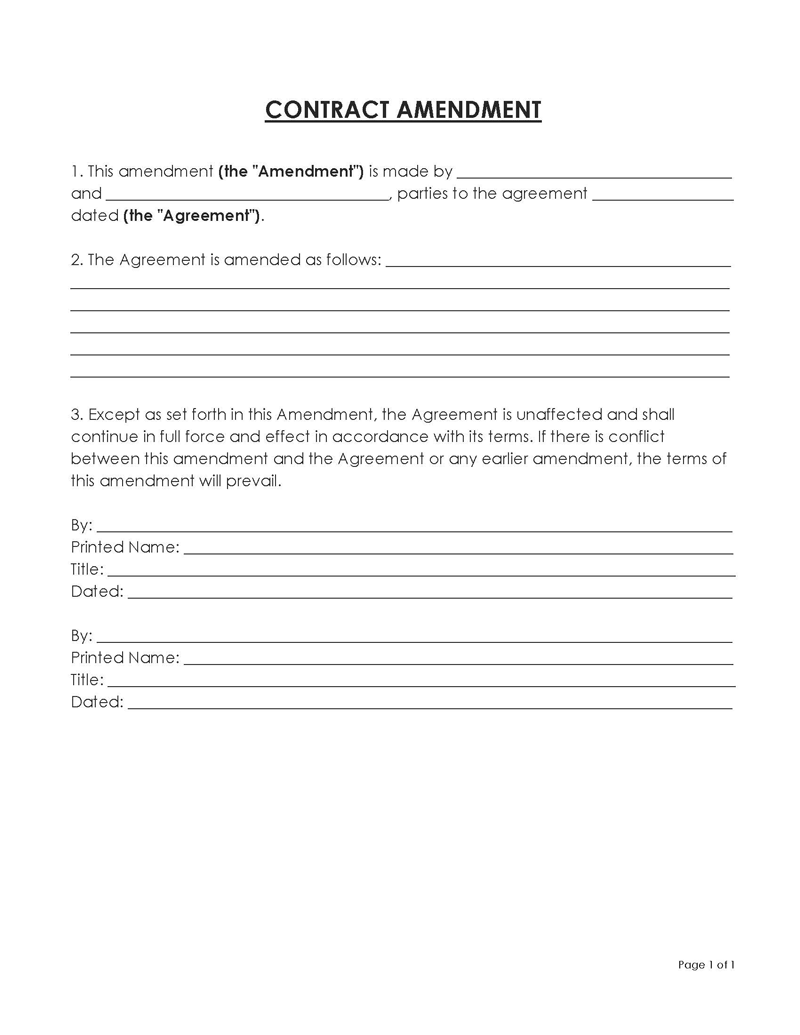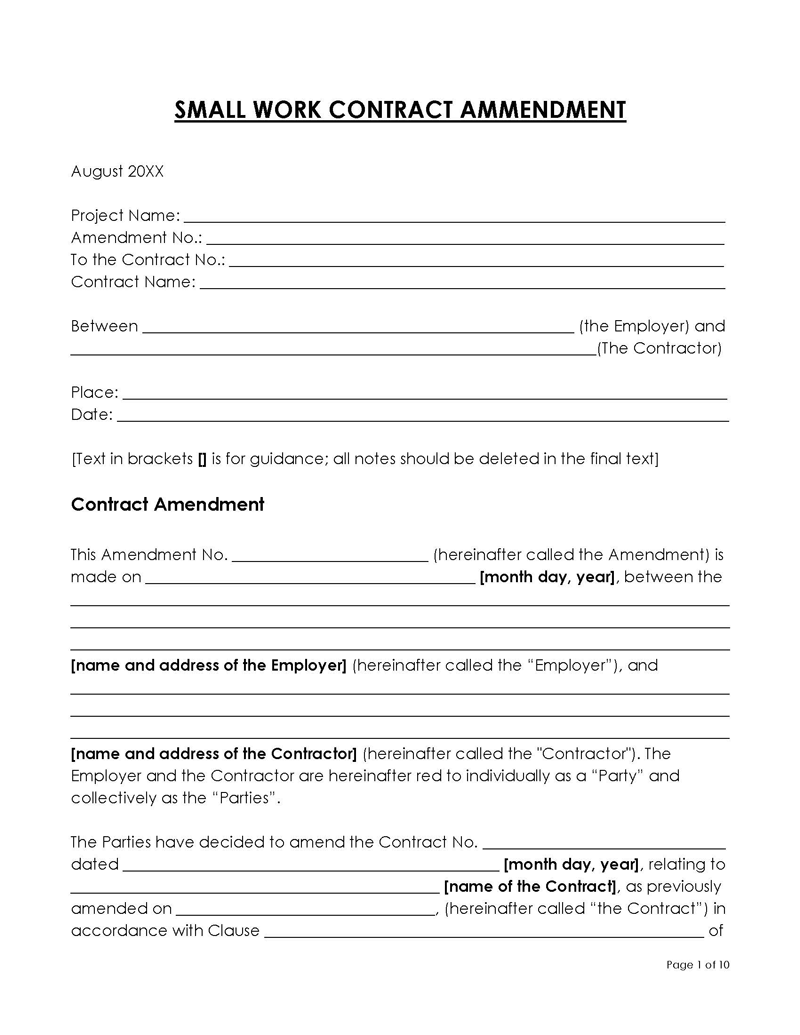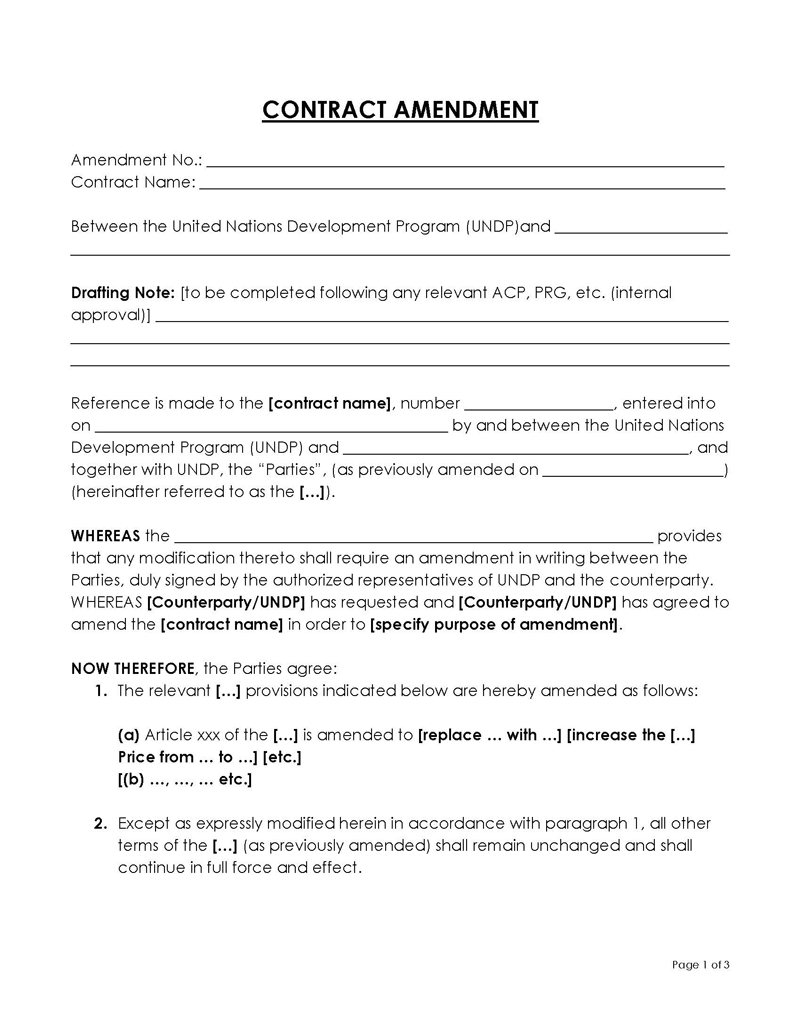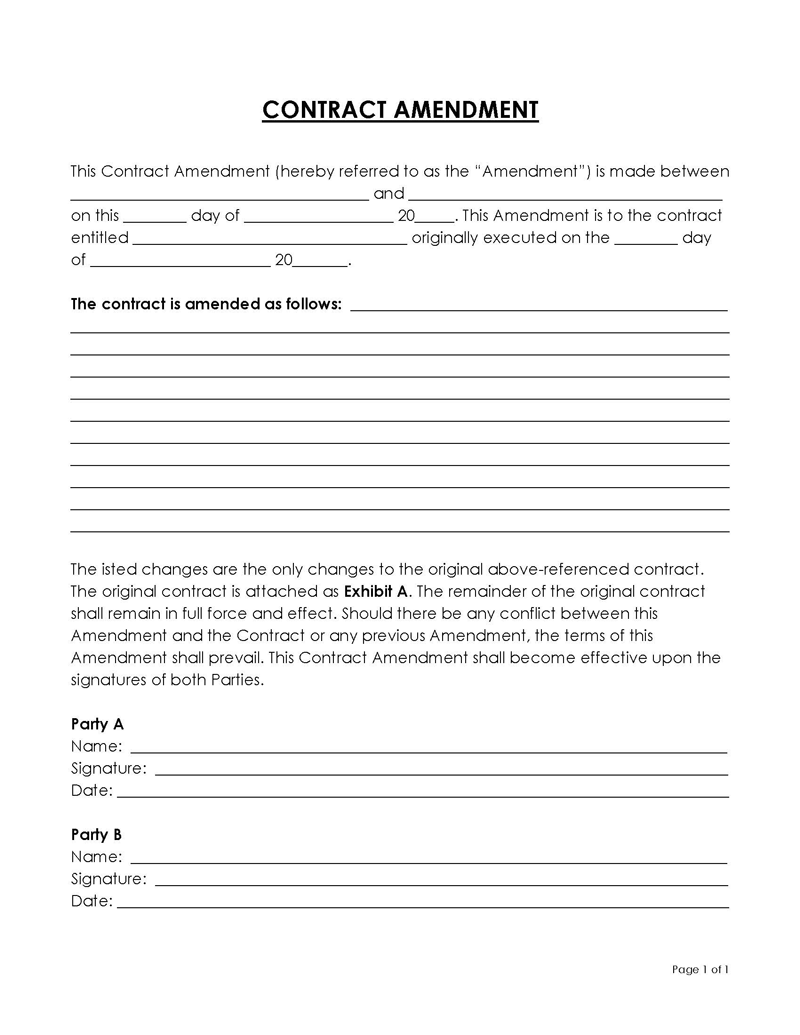A “Contract Amendment” is a phrase that is already self-explanatory when you process each word separately.
A contract is a legally binding undertaking (written or spoken) that defines the rights and responsibilities of two or more parties. At the same time, an amendment is a formal alteration or change made to an already existing condition, document, or deed.
It is usually needed when parties have decided that they need to make changes to the conditions of an existing contract.
This article will expound on the intricate differences between contract amendment and contract addendum when to use both, contract amendment template and the characteristic components.
What is a Contract Amendment?
It is a lawful process that involves altering the conditions in an already existing contract. All the parties concerned must mutually agree to the changes for this to stand.
How does it work?
It can be deleting, editing, or adding new terms to an existing contract. Usually, business associates or partners request this contract if they develop a new feeling about their interest expectations or are displeased about their partner’s non-compliance to the terms of their contract. Despite the changes made to the contract, this process preserves the integrity of the original agreement and need not be formalized into another document. When a party/parties nominate an amendment to the present contract, it is a contractual amendment. The process must follow an outlined procedure in which the consent of both parties is required.
Differences Between Contract Amendment and Contract Addendum
They both may seem the same, but the two differ in terms of purpose and process upon closer inspection. They both cause a new development in a contract agreement, yet needed under different conditions.
Below is an explication of the differences between both:
Contract amendment
It is a document that directly changes targeted existing terms in a contract instead of proposing a whole new contract agreement process. Instead, it goes through a formal process and requires the signatures of all concerned parties.
For example, there might be a need to change the already existing agreement on the partner’s entitlement payment plan if the party responsible for making the transaction suddenly realizes that the business’s new conditions would reduce profit margin. It is also used in other cases, such as the need to extend an earlier agreed deadline, language change, increment of interest percentage, etc.
When the occasion arises to change a contract, it’s essential to keep yourself updated and enlist the help of an expert in this area. The best way to ensure you’re covered is by having a good lawyer who will make sure you cover all bases before making amendments that could potentially cost you down the road, like a set of unforeseen consequences or any other mistakes.
Contract addendum
A contract addendum is a document that introduces new terms that are not in the existing contract or provides more details (such as additional terms and conditions) about a specific section of the existing contract. It is a short, legally binding document attached to another existing contract.
The addendum makes changes and additions to the existing contract while the main contract is still in effect. However, it is essential to note that the contract addendum is still legally binding. In other words, even if the original contract is breached or terminated, the addendum still stands. Therefore, it is not uncommon for businesses to use a contract addendum to change the original contract.
For example, an individual may request renegotiation to retain the employees in a company he has bought. This isn’t in the existing contract in the first place, so it is a contract addendum. It can be generally used in business dealings between individuals, companies, clients, etc. Examples of contracts that can require an addendum are sales or lease agreement contracts, employment contracts, etc.
tip
Managing addenda and amendments-Change is inevitable, so that an existing contract will require an amendment or addendum at some point. Considering the technicalities that often surround reasons for the development, the approach to managing the documents matters. Using a basic contract management process presents a better approach to the storage, review, understanding of the documents involved, and contract referencing. In addition, there are contract management software applications and tools that help cancel the risks often encountered through manual error – this will exceptionally help in dealing with a complex and high volume of contract agreements.
Components
There are essential details that must be included in a proper contract. It must follow the proper format and fully capture the interest of all the parties involved.
These essential components are:
Date of the original contract and the effective date of the amendment
Dating a document verifies the timeline of the document. Verify the date the original contract became executed and the effective date of the amendment. If there were any amendments in the past, verify the dates.
Names of involved parties
Names of individuals and companies are fundamental to verify the identities of all the concerned parties. This might seem like a simple thing to remember, but it is an essential element that is often missed and can lead to the entire amendment being void.
Describe the amendments
Outline the reason for the amendment. Strike through the area of focus to direct attention to it, alter the area or section that requires change, or point the changes out separately in writing.
The nature of the change
This section requires depth in terms of details about the specific changes that will be made to the existing contract. This is an essential component because it tells if the change will be added, deleted, or edited.
No other changes statement
This is to certify that aside from the changes included in the contract, all other contents in the original contract remain unchanged, unaffected, and 100% effective. This section confirms that all parties consent to the status quo, and no other changes are required.
Governing law
The document must align with local, state, and federal laws. The legal requirements (e.g., witness during contract signing and execution) must be clear and vetted. All parties will be accountable under the law, provided they have signed and consented to the document.
Signatures of both parties and the witness
All parties involved must sign the document to confirm that the agreement is mutual. A contract with the signature of only one party is invalid. Witnesses (of legal age – 18 and above) must also be present to sign and confirm their knowledge of the execution process.
Contract Amendment Templates
Writing the contract can be a stressful and brain-tasking process. These templates offer a standard guide that eases the writing process.




Tips
Some points will help you when writing your contract. The following tips will assist you in the process:
Put the contract in writing
It is usually a written document – this is a very recognized business practice. It should be in writing, in a language that all the parties involved can read and understand. The law is usually quite clear on whether a contract exists (or not), but the question is: what does it contain? What does each party get, and where does the risk lie? In many cases, the contract is the only written proof of what was agreed, and a written contract is often the best way to protect yourself from any future problems.
Reference the title of the contract
Referencing is very important and valuable for clarification when writing this document. For example, you can reference the title of the existing contract and other details such as the date it was executed and the parties who signed it.
Distribute the copies
It is crucial to distribute copies of the signed and executed contract to all parties involved in the contract. It is advised that you have a copy of this document in both hard and soft copy. It is a legally binding document; if a dispute arises, you will need to provide it as a substantial piece of evidence for the court to base the ruling on.
Avoid making multiple amendments
Avoid making multiple amendments. It can get clumsy, primarily if the contract is targeted at a previous amendment. Instead, it is advised to write a fresh contract with new and unambiguous terms if you wish to make multiple amendments.
Restate the entire paragraph
Not generally applied, but sometimes, restating the entire terms or section of the existing contract is required. It clarifies the governing language in the existing contract. This will further aid the contract management process.
Execute your amendment
Execution validates the existence of this amendment. Therefore, the moment all the parties sign the document, it becomes effective and binding under the law. Therefore, if you want to notarize the contract, wait till you are all in the notary’s presence to sign.
Review and sign
Go through the amendment over again. You can give it to a third party for an outsider’s perspective to ensure it is free of mistakes. Ensure that you have followed all the rules, print it, and sign.
Frequently Asked Questions
No, it’s not. But, again, that is just a negotiation of terms because the document has not been signed. It is common for companies to negotiate the terms of a contract before signing. It is an excellent idea to do so since it is easy to overlook minor details or not to understand the full impact of the contract until you have time to think about it. But, again, this is not the same as the contract because there is no existing contract between the parties.
It offers a faster approach to renegotiating terms since it’s not like the parties are dissatisfied with the entire contract. However, starting a whole new contract will require more time and resources.
Yes. Usually, all contracts should be amenable, except if it has been stated in the existing document that the agreement is not to be changed. Or if the other parties do not agree to the new changes.
Yes, it is. If the parties involved consented to the changes and signed the document, noncompliance will necessitate legal actions.
Yes, they are valid in unique cases, such as when the counterparty is notified of suggested changes and offered the option to terminate enforcement. Still, inaction will give the other party the right to enforce the change, such as the cardholder agreement, if the credit card company sends you a notification of amendment. Although you did not react to it, the further use of the credit card implies your consent to the amendment, which gives the credit card company the right to enforce changes.
No, it doesn’t. The existing contract is still valid and binding. Contract amendment is only targeted to alter specific terms or conditions in the existing contract.




